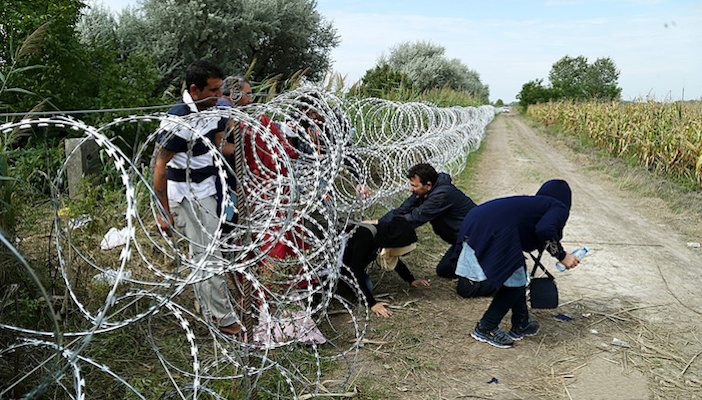
One of my previous blogs was titled “Who is a refugee?” and I recently participated in a discussion forum asking the same question. It is obviously an important question and reflects concerns about the limitations of the UN Refugee Convention definition, which I also examined in a previous blog. What I have come to realise is that there is another question being asked here which is just as important: who is not a refugee? This has both important theoretical and practical importance. The theoretical importance is that we need a clear boundary between the refugee and the not-refugee upon which to build our definition of the former. The political importance is that what we are saying when we define people as refugees is that they are entitled to a set of international binding rights and protections. But at the same time we are saying that those excluded from the definition are excluded from that set of rights and protections.
There are some obvious examples where this is very worrying. First there are the internally displaced – those who haven’t crossed an international border. Second are those fleeing violence who are not being directly persecuted. The third, very controversially, is climate change – those displaced by environmental disaster in general and climate change events in particular. Asylum seekers are a fourth example: while they the right to have their claim heard they have no rights about the conditions under which they can be held until there is an outcome.
But I want to look at a different case, that of the economic migrant, because the standard distinction people make here is between the refugee and the economic migrant. How that distinction works is that the refugee is someone who is forced to flee their host country – they have no choice and no agency. The economic migrant chooses to leave their host country – they exercise choice and agency.
This distinction is standard in theory, policy and practice. If you look at the major global institutions like the World Bank and the UNHCR they all use it in this form. For example, the UNHCR, in explaining the difference between migrants and refugees, says: “Migrants choose to move not because of a direct threat of persecution or death, but mainly to improve their lives by finding work, or in some cases for education, family reunion, or other reasons.”
But let’s look at the basic assumption behind the distinction, that the economic migrant is not forced to leave their host country. That assumption doesn’t stand up for any longer than a split second – to claim that people leaving their host countries through extreme poverty and deprivation are not being forced to leave is to depend on a very tendentious definition of what counts as being forced.
The other side of this, of course, is that a good number of refugees do exercise choice and agency in choosing to get into Global North states rather than remain in the Global South, and the Global North states would prefer them not to have any agency at all, or at least just enough agency to get over the border into another Global South state – and so the European Union and its members are doing their best to take away what little agency refugees now have, and they are doing it very effectively.
At present 84% of the world’s refugees are being hosted by Global South nations, and 28% are in some of the poorest countries in the world. See here. If you count refugees per one million US dollars GDP, then the top five hosting nations are South Sudan, Chad, Uganda, Niger and Lebanon.
This is a status quo the Global North wishes to maintain. In 2015 more than a million people exercised agency and choice to get into Europe. In response to that the European Union and its members have taken active steps to close down those routes, so much so that 390,000 got into Europe in 2016. The numbers dying in the Mediterranean, in contrast, went up, from around 3,700 in 2015 to around 5,000 in 2016. Those measures include making deals with states with dubious human rights records, most recently Italy’s deal with certain groups in Libya, deals which – certainly in the Italy/Libya case – drive right through the European Convention on Human Rights.
But what I want to draw attention to here are the not-refugees, especially those we classify as ‘economic’ migrants but who are fleeing places in search of basic survival. This is not to say that we have to get all of these groups inside our definition of the refugee – but it is to say that we cannot simply ignore them so we can arrive at a neat definition which gives refugees a set of internationally binding rights and protections. What we need to know is what rights and protections are going to put in place to protect the fundamental human rights of other forcibly displaced groups – including economic migrants.
And so the question, “Who is a refugee?” has its opposite, “Who is not a refugee?”, and the two questions are inextricably entangled in complex ways, such that our focus on internationally binding human rights and protections has to be included in our answers to both of these questions.
Further Reading on E-International Relations
- The Cartagena Declaration at 35 and Refugee Protection in Latin America
- Forced Migration and Security Threats to Syrian Refugee Women
- National Responses to the Syrian Refugee Crisis: The Cases of Libya and Malta
- Empathy and Othering: Framing Syria’s Refugee Crisis in the British Press
- The European Union’s Response to the Syrian Refugee Crisis
- UNHCR, National Policies and the Syrian Refugee Crisis in Lebanon and Jordan